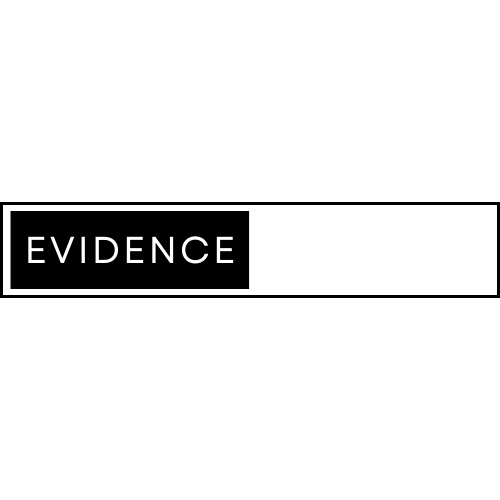Entrenched in the Echo Chamber: Group Dynamics in U.S. Politics During an Election Year
David A. Songco, PsyD LP-HSP

As the U.S. gears up for another election year, we find ourselves once again in the swirling vortex of political debate, division, and, if we’re being honest, some spectacular levels of social media mudslinging. But what’s fascinating, and perhaps a little unnerving, is how entrenched these divisions have become. It’s like watching rival camps build higher and thicker walls, all while shouting over them. The question for those of us in group psychology is: how did we get here? And what can group dynamics teach us about navigating this landscape of entrenchment and division?
Social Identity Theory (SIT) offers a critical lens to understand the “us vs. them” mentality that drives much of today’s political conflict. SIT posits that people categorize themselves and others into groups—whether based on political affiliation, race, or even favorite Netflix show. Our sense of self becomes deeply tied to these group memberships, and we begin to view “our group” as superior to the “other group.” This polarization escalates during election years, where political identity isn’t just about policies but about personal identity. Voting red or blue becomes an extension of who we are, not just what we believe. Tajfel and Turner (1979), pioneers of SIT, explain that this categorization leads to in-group favoritism and out-group discrimination, resulting in more entrenched divisions.
The APA’s work on group polarization amplifies this point. Research in the Journal of Personality and Social Psychology suggests that when like-minded individuals gather, their collective opinions tend to become more extreme (Myers & Lamm, 1976). This phenomenon is playing out before our eyes in political echo chambers, where social media algorithms feed us content that confirms our biases and further entrenches us in our respective camps. Not only does this widen the gap between parties, but it turns healthy political discourse into something resembling the finale of The Real Housewives. This is supported by a study in Current Directions in Psychological Science (Sunstein, 2009), which highlights how exposure to homogeneous opinions further intensifies political polarization.
Moreover, research on interpersonal theory reminds us that relationships are at the heart of these group dynamics. We crave connection, even if it’s based on shared outrage. This is why political discourse often spirals into conflict—our need to be part of a tribe (even a digital one) feeds into our need to validate our identity through others. In other words, if everyone in my social group is firmly entrenched in their beliefs, I’m more likely to entrench myself too. After all, who wants to be that person at the dinner table defending nuance? Is there space for nuance?
Observing group dynamics allows us to better understand the forces at play—and how we can soften the edges. Instead of viewing every disagreement as a battleground, we might consider embracing relational theory to foster empathy across divides. It is important that we continue to bridge interpersonal gaps through dialogue, where the goal isn’t to win the argument but to understand the other person’s emotional and cognitive world (Miller, 2020). Maybe if we took a moment to step out of our echo chambers and into someone else’s shoes, we could begin to find common ground—perhaps not in political ideology, but in shared humanity. Basic empathy goes a long way.
Pratto et al., (1994) offers additional insight, pointing to the role of social dominance theory in political group dynamics. In times of political uncertainty, groups may increase their adherence to hierarchical structures and group dominance, further deepening societal divisions. These dynamics create barriers to empathy and dialogue, fostering a climate where conflict is inevitable and reconciliation feels out of reach.
In sum, the next time you feel drawn into an online shouting match, feel compelled to comment on a click-bait post, or engage in a heated family debate, remember that this isn’t just about politics—it’s about identity, group loyalty, and our deeply rooted need to belong. Understanding the dynamics of group polarization and social identity theory can offer us a roadmap out of the trenches. And who knows? Maybe the real political revolution isn’t red vs. blue—but finding a way to lower our walls, just a little.
Be sure that you are registered and can vote here: Can I Vote | NASS
References
Miller, S. A. (2020). Relational theory and empathy in political discourse. Journal of Counseling Psychology, 67(3), 410-425.
Myers, D. G., & Lamm, H. (1976). The group polarization phenomenon. Psychological Bulletin, 83(4), 602-627.
Pratto, F., Sidanius, J., Stallworth, L. M., & Malle, B. F. (1994). Social dominance orientation: A personality variable predicting social and political attitudes. Journal of Social Issues, 50(1), 165-181.
Sunstein, C. R. (2009). Going to extremes: The dangers of group polarization. Current Directions in Psychological Science, 18(4), 182-185.
Tajfel, H., & Turner, J. C. (1979). An integrative theory of intergroup conflict. In W.G. Austin & S. Worchel (Eds.), The social psychology of intergroup relations (pp. 33-47).

